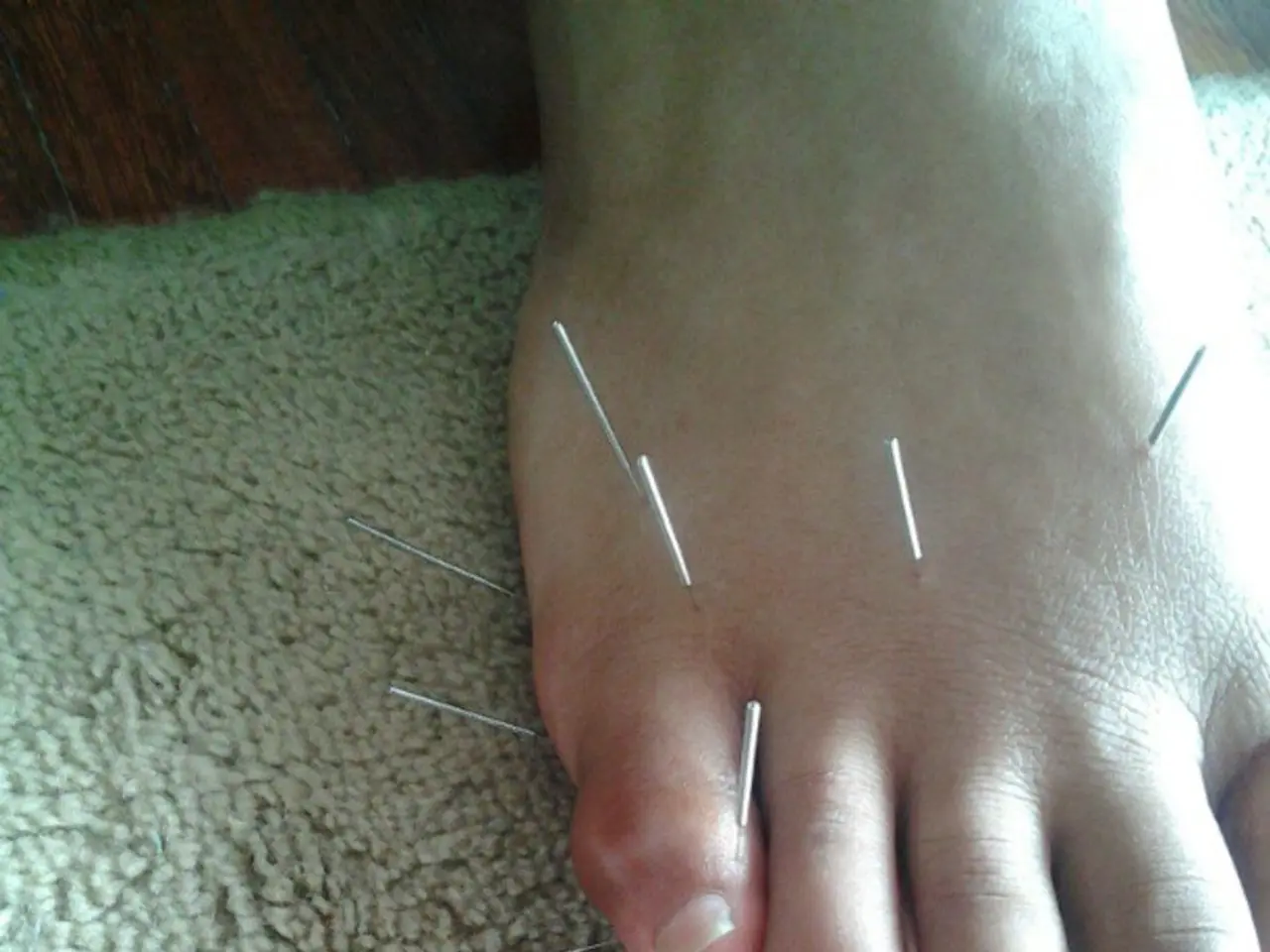Medications for Blood Pressure Control: Their Varieties, Potential Side Effects, and Associated Risks
In managing high blood pressure, various medications are available, each with unique mechanisms and potential side effects. Here's a breakdown of some common types of blood pressure medications, their uses, and precautions.
ACE inhibitors, such as benazepril hydrochloride (Lotensin), fosinopril sodium (Monopril), and quinapril hydrochloride (Accupril), work by blocking angiotensin-converting enzyme (ACE), thereby relaxing the blood vessels and allowing blood to flow more freely. However, people with diabetes, kidney disease, or pregnancy should exercise caution when using ACE inhibitors. A dry cough is a common side effect, and less common side effects include loss of taste, a metallic taste in the mouth, and low blood pressure.
Beta-blockers, like acebutolol (Sectral), atenolol (Tenormin), and propranolol hydrochloride (Inderal), reduce blood pressure by blocking the action of hormones in the nervous system, such as epinephrine. While effective, beta-blockers may not be suitable for people with certain conditions, including diabetes, poor circulation, or heart failure. Common side effects include tiredness or fatigue, weakness or dizziness, and cold hands and feet.
Central agonists, such as alpha methyldopa (Aldomet), clonidine (Catapres), guanabenz acetate (Wytensin), and guanfacine hydrochloride (Tenex), prevent the brain from sending signals to the nervous system to increase heart rate and constrict blood vessels. These medications should be used with caution by people with kidney or liver disease, depression, or pregnant women.
Calcium channel blockers, including diltiazem hydrochloride (Cardizem), nifedipine (Procardia XL), and verapamil hydrochloride (Calan SR), slow the entry of calcium into the smooth muscles of the heart and arteries, reducing the strength of the contractions and lowering the blood pressure. However, these medications may not be suitable for people with very low blood pressure, heart failure, or other conditions affecting the heart or blood vessels.
Diuretics, such as chlorthalidone (Hygroton), amiloride hydrochloride (Midamar), and furosemide (Lasix), help the body eliminate excess salt and water, reducing blood pressure. While effective, diuretics commonly cause side effects related to fluid and electrolyte imbalances, including hypokalemia (low potassium levels), hyponatremia (low sodium levels), dehydration, and low blood pressure (hypotension).
Patients should monitor their electrolytes, kidney function, and uric acid levels during diuretic therapy to manage these side effects and avoid dangerous interactions. Notable drug interactions include those with digitalis glycosides, corticosteroids, lithium, NSAIDs, curariform neuromuscular blockers, Cholestyramine or colestipol, and antidiabetic agents.
In summary, while each medication has its benefits and potential drawbacks, it is crucial for patients to discuss their medical history and current medications with their healthcare provider to ensure the most suitable treatment plan. Regular monitoring of side effects and potential interactions is essential to maintain optimal health.
- ACE inhibitors, like benazepril hydrochloride, fosinopril sodium, and quinapril hydrochloride, are beneficial for managing high blood pressure, but they can also cause a dry cough and other less common side effects.
- Beta-blockers, such as acebutolol, atenolol, and propranolol hydrochloride, are effective at reducing blood pressure, but they may not be suitable for people with diabetes, poor circulation, or heart failure due to potential side effects like tiredness and low blood pressure.
- Central agonists, including alpha methyldopa, clonidine, guanabenz acetate, and guanfacine hydrochloride, are used in managing high blood pressure, but they should be used with caution by people with kidney or liver disease, depression, or pregnant women.
- Calcium channel blockers, such as diltiazem hydrochloride, nifedipine, and verapamil hydrochloride, are beneficial for reducing blood pressure, but they may not be suitable for people with low blood pressure, heart failure, or other conditions affecting the heart or blood vessels.
- Diuretics, like chlorthalidone, amiloride hydrochloride, and furosemide, are useful in helping the body eliminate excess salt and water to reduce blood pressure, but they can cause side effects related to fluid and electrolyte imbalances.
- Patients on diuretic therapy should monitor their electrolytes, kidney function, and uric acid levels to manage side effects and avoid dangerous interactions with other medications like digitalis glycosides, corticosteroids, lithium, NSAIDs, Cholestyramine or colestipol, and antidiabetic agents.
- In managing high blood pressure, science and medicine have made various treatments available, including ACE inhibitors, beta-blockers, central agonists, calcium channel blockers, and diuretics, each with unique mechanisms and potential side effects.
- It is essential to discuss one's medical history and current medications with a healthcare provider to ensure the most suitable treatment plan, as each medication's benefits and potential drawbacks vary among individuals.
- Regular monitoring of side effects and potential interactions is crucial to maintain optimal health, especially for those with multiple medical conditions like obesity, other heart diseases, lung disease, cancer, depression, anthrax, hypertension and BPH drugs, asthma, COPD, skin care needs, and nutritional requirements.
- Pursuing health-and-wellness practices like fitness-and-exercise, mental-health management, and proper skin-care is important for overall cardiovascular health and managing chronic diseases and respiratory conditions like high blood pressure and its associated risks.
- A comprehensive approach to managing one's health includes not just medication but also a balanced diet, regular exercise, mental health care, and a solid understanding of one's medical conditions, potential side effects, and how various medications may interact with each other.




